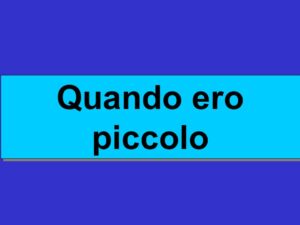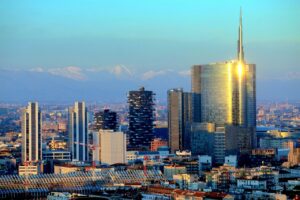Easter and Easter Monday are two holidays that are celebrated with great enthusiasm in Italy and are traditionally linked to religion, culture and good food. Every year, through intimate or collective rites, Italians celebrate with a mix of local food and wine and scenic centuries-old, religious or pagan customs, different for each region. Easter and Easter Monday are the two final days of Holy Week and mark the beginning of spring, bringing with them moments of reflection, but also of joy and celebration.
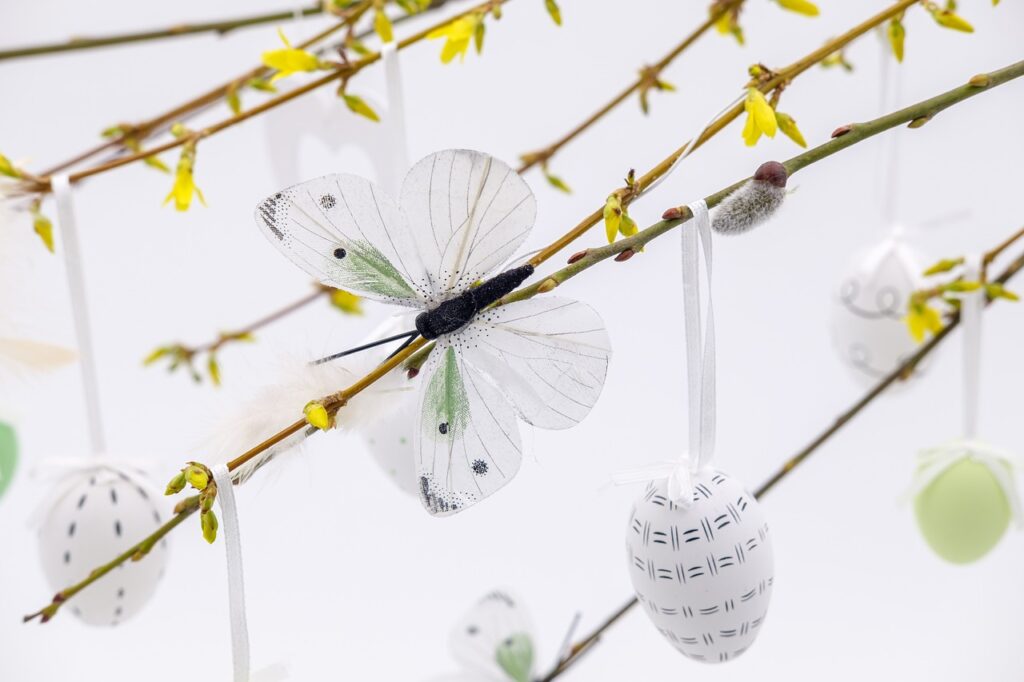
Easter and its religious meaning: the resurrection and the triumph of life
In Italy, Easter is a holiday of great religious significance. It celebrates the resurrection of Jesus Christ, an event that for Christians symbolizes victory over death and the hope of a new life. Religious traditions are at the center of the celebration: many families attend Easter mass, an opportunity to gather in prayer and reflect on spirituality.
Italian churches are often adorned with flowers and candles, and Easter celebrations usually begin on Good Friday, when processions are set up through the streets of the city, with the representation of the Via Crucis. Good Friday represents the passion and crucifixion of Jesus Christ for the redemption of the human race.
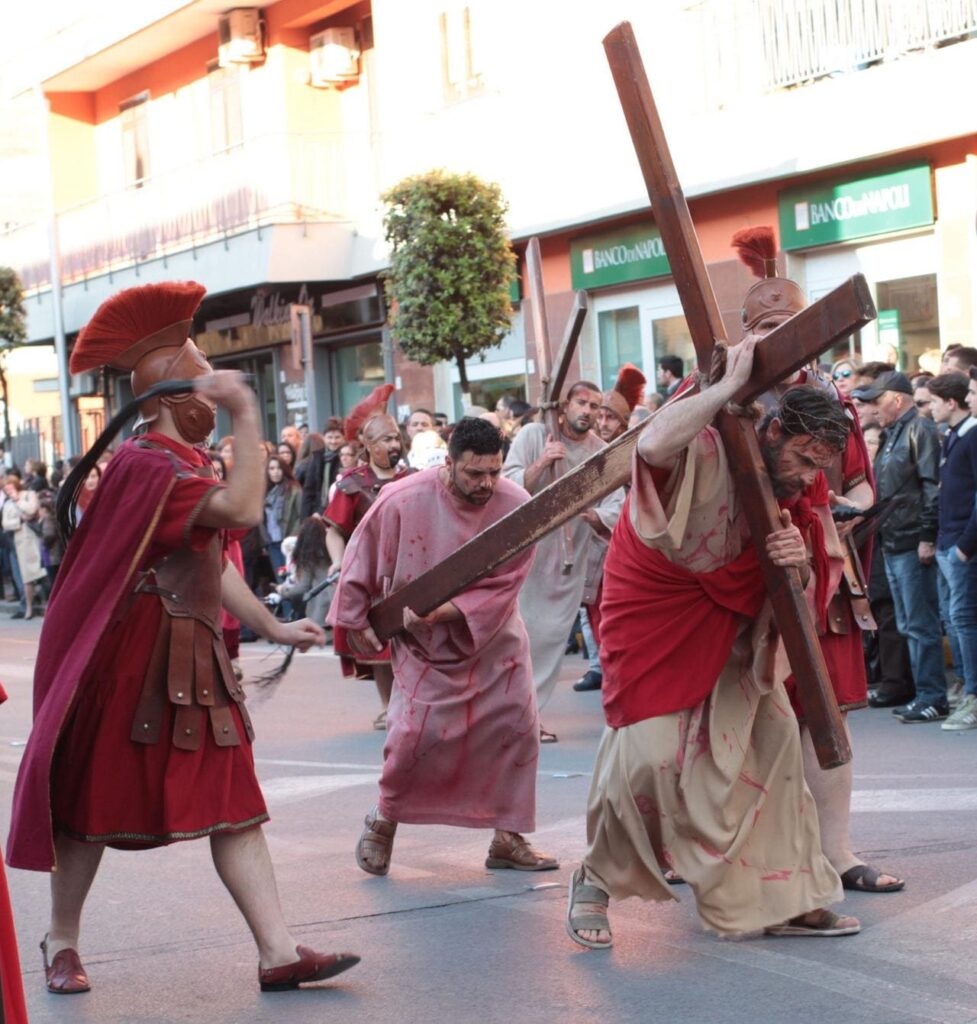
Holy Saturday, on the other hand, is a day of silence, meditation and prayer, awaiting the announcement of the resurrection that will take place in the solemn Easter vigil.
Easter Sunday is a day of celebration, Lent is broken and the resurrection of Jesus Christ is celebrated.
Easter and food: the main gastronomic traditions
Easter is also synonymous with food and family lunches, where typical dishes vary from region to region, but with some ingredients that are repeated throughout the country. Let’s see together what are the most representative foods of these holidays:
– baked lamb: often cooked with herbs such as rosemary, garlic and white wine, lamb is the main dish of Easter lunch in many Italian families and symbolizes the sacrifice of Christ;
– Easter dove: the dessert par excellence of Italian Easter. With its shape that recalls a dove, symbol of peace and resurrection, the dove is a leavened dessert that enriches the table with almonds, powdered sugar and candied fruit;
– chocolate eggs: every year, Italian pastry shops indulge in the creation of chocolate eggs, often with surprises inside, a custom loved by children and adults alike. Eggs symbolize rebirth and life that begins again with spring;
– Easter focaccia: in some regions, such as Liguria, a focaccia or a savory pie is a must, often with the addition of cheese or other typical local ingredients, such as the Easter pie, a typical dish that is prepared during this period and can also be enjoyed as a snack outdoors.

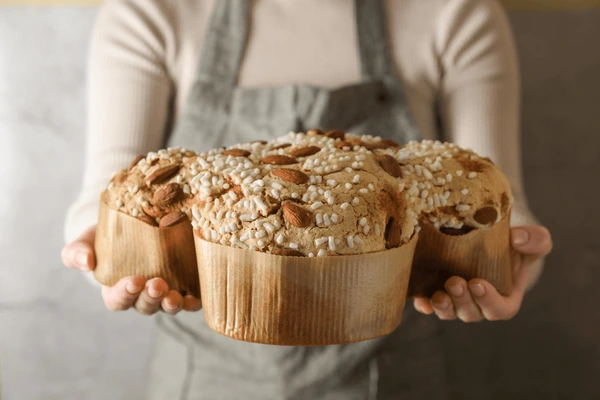
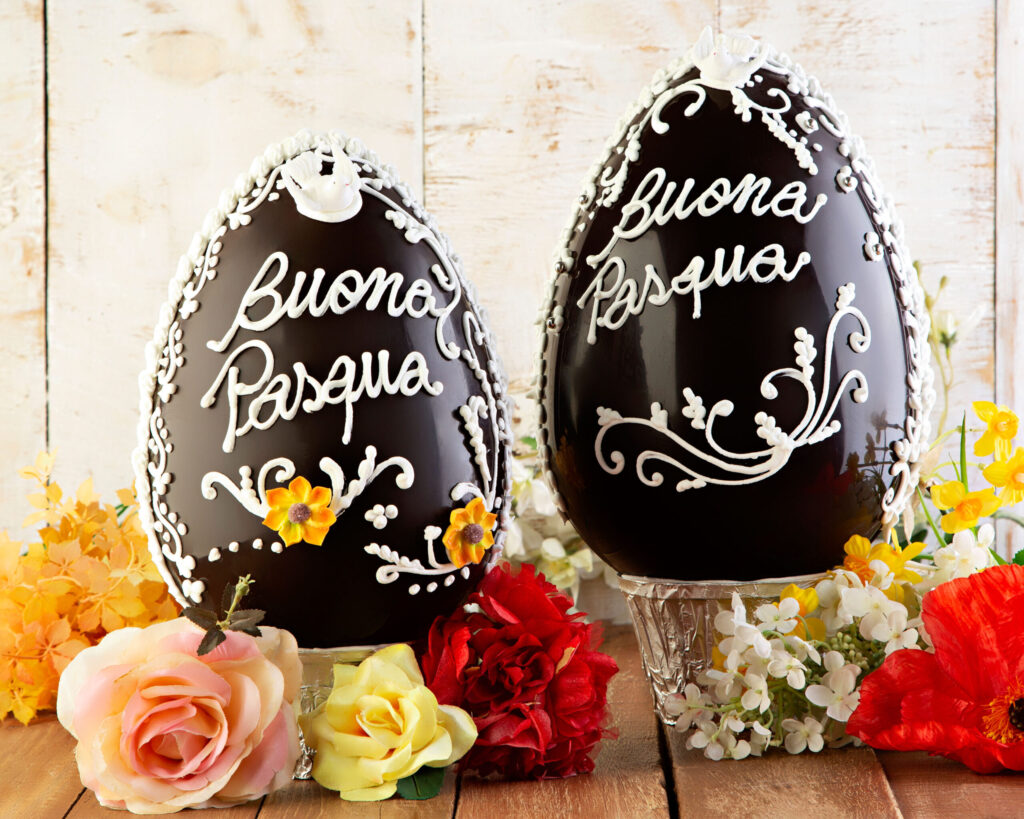
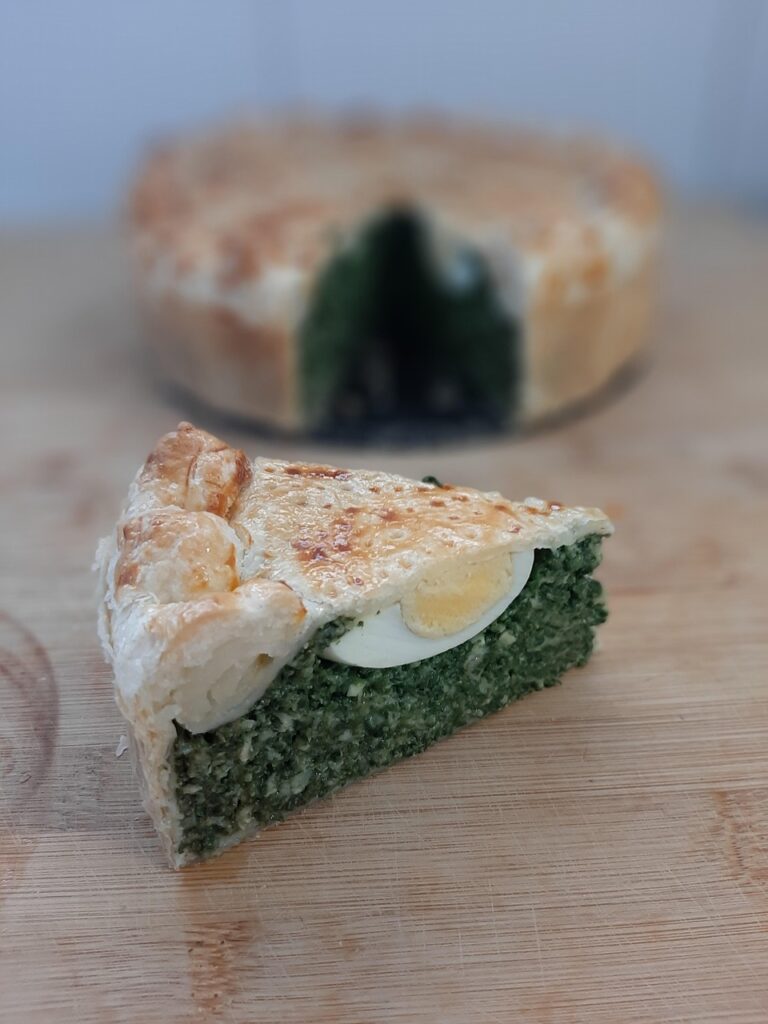
Easter eggs tradition
One of the most beloved traditions of this holiday are the milk or dark chocolate eggs, which are given to children on Easter Sunday and which usually contain a surprise. This custom is very ancient and passes through the symbolism of life and the love of luxury. Already in pagan times, the exchange of chicken eggs was a way to celebrate the arrival of spring, with the return to lush nature and the improvement of the climate. With Christianity, the egg, synonymous with life, becomes a symbol of the resurrection of Christ and Easter.
In the Middle Ages, decorated hard-boiled eggs were given as gifts. Then the habit of recreating the eggs in porcelain and embellishing them with precious stones, gold and silver to give them to noble families spread.
It is said that it was Louis XIV who had the first chocolate eggs made, in the early 1700s: it was he, after all, who granted David Chaillou, the first French chocolatier, the exclusive right to sell chocolate in Paris.
The height of refinement was reached in 1887, when Peter Carl Fabergé, goldsmith at the Russian court of the Romanovs, created the famous eggs with enamel, platinum and precious stones containing a jewel. The first idea of Easter eggs arrived in Italy in 1725, when a famous shop in Turin had the idea of filling the empty shells of chicken eggs with chocolate.
In Italy, the tradition of chocolate eggs to give as gifts at Easter was born in Turin, when the Sartorio House of Turin patented a system for modeling empty shapes with chocolate. The surprise inside the eggs was added in 1925, initially little animals in sugar or sugared almonds, then increasingly expensive and precious gifts. By 1927, chocolate Easter eggs in Turin were all the rage, and since then their success has never stopped, until the boom of the Second Post-War period.


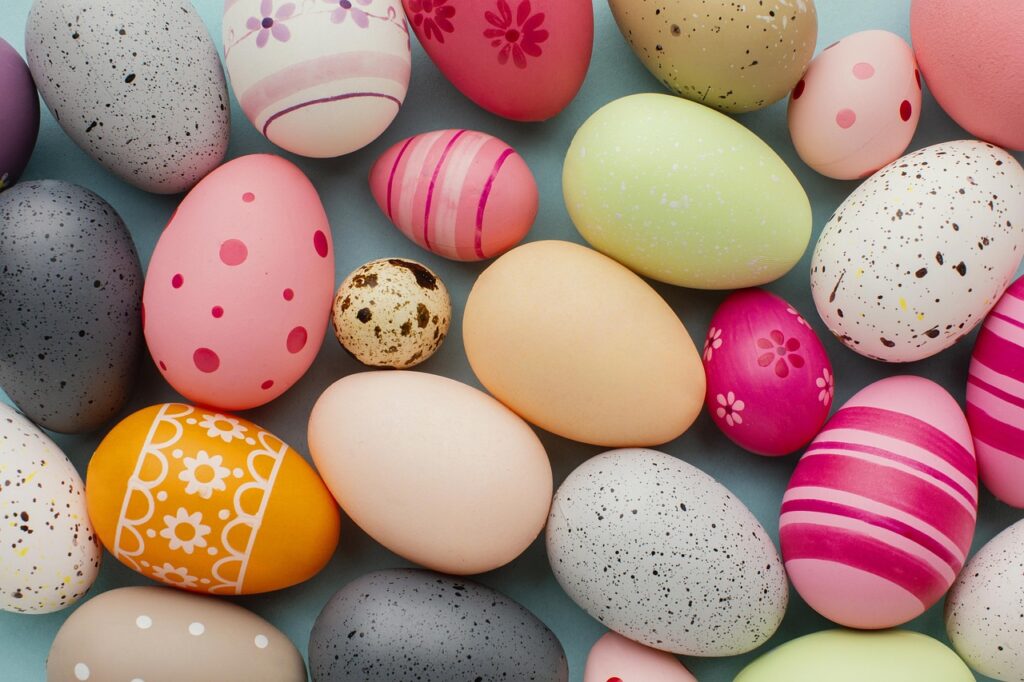

Easter Monday: a day of relax and nature
Easter Monday, the day following Easter, does not have a purely religious character. In Italy, Easter Monday is considered a civil holiday and was introduced after the war to extend the period of rest linked to Easter. While Easter is mainly dedicated to religious reflection, Easter Monday is a time for relaxing in the open air, for a picnic with family and friends.Traditionally, families or friends gather for a day outdoors, often in the countryside, at the seaside or in the mountains, taking advantage of the holiday to enjoy the first warm spring weather. The picnic is an opportunity to enjoy the leftovers from Easter lunch along with other simple but tasty foods: savory pies, cured meats, cheeses, salads, hard-boiled eggs, along with a good bottle of wine. Here too, gastronomic customs vary from region to region. In some areas, such as Tuscany, it is traditional to eat “schiacciata con l’uva” (a type of sweet focaccia), while in Sicily “cassate” or other typical sweets are often eaten. Easter Monday is also the day when the famous barbecue is held outdoors, taking advantage of the mild climate.
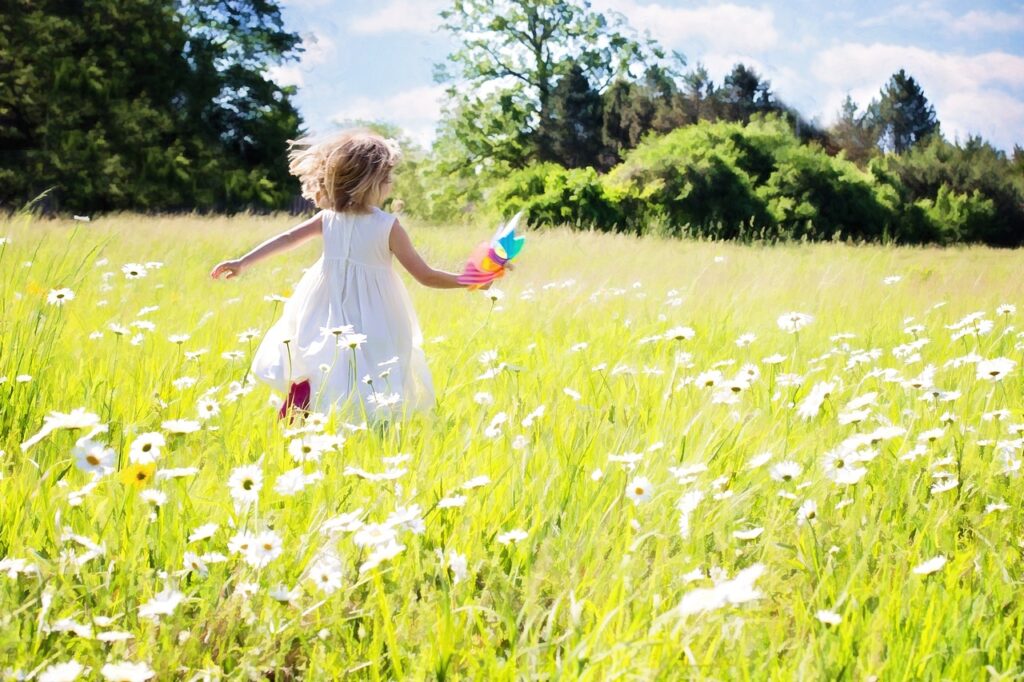


Conclusion
Easter and Easter Monday in Italy are much more than just days of celebration: they are a mix of religious traditions, popular customs and moments of conviviality that mark the transition from winter to spring. While Easter calls for spirituality and reflection, Easter Monday is the day of lightness, joy and sharing with loved ones. Traditional dishes, rich in flavors and symbolism, are another central aspect, which make these holidays a unique moment to experience in every corner of the Bel Paese.
If you want to delve deeper into this topic and talk about the main holidays that take place in Italy, we suggest you book a conversation lesson with us, where you can discover with a native Italian teacher how Italians spend the holidays: https://chiaratheitalianteacher.com/conversation-course/
If you liked this article and want to tell us how you will spend Easter and Easter Monday this year, leave us a comment!

